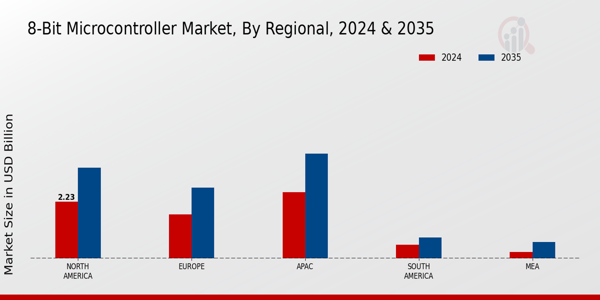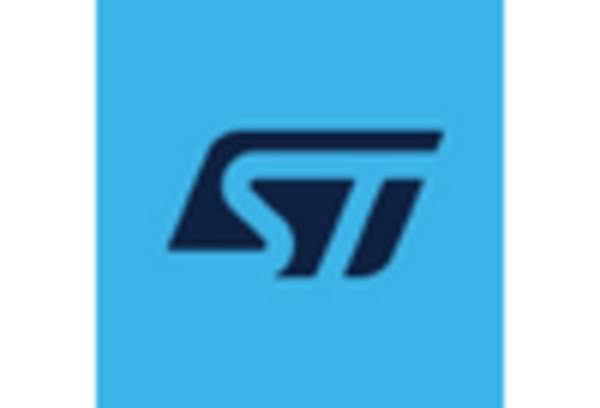Emergence of Smart Home Solutions
The emergence of smart home solutions is reshaping the landscape of the 8-Bit Microcontroller Market. As consumers increasingly seek convenience and energy efficiency, smart home devices such as thermostats, security systems, and lighting controls are gaining popularity. The smart home market is anticipated to reach a valuation of over 150 billion dollars by 2025, with microcontrollers playing a pivotal role in enabling connectivity and functionality. This trend suggests that the demand for 8-bit microcontrollers will likely surge as manufacturers develop innovative solutions to meet consumer expectations. The integration of microcontrollers in smart home devices not only enhances user experience but also drives the growth of the 8-Bit Microcontroller Market.
Rising Focus on Energy Efficiency
The rising focus on energy efficiency across various sectors is a crucial driver for the 8-Bit Microcontroller Market. As organizations and consumers become more environmentally conscious, there is an increasing demand for electronic devices that consume less power. In 2025, the energy-efficient electronics market is projected to exceed 100 billion dollars, with microcontrollers being integral to optimizing energy consumption in devices. This trend indicates that manufacturers of 8-bit microcontrollers will likely innovate to create solutions that meet these energy efficiency standards. Consequently, the 8-Bit Microcontroller Market is poised for growth as it aligns with the global push towards sustainable technology.
Expansion of Industrial Automation
The ongoing expansion of industrial automation is a significant driver for the 8-Bit Microcontroller Market. As industries increasingly adopt automation technologies to enhance productivity and efficiency, the demand for microcontrollers that can manage complex processes rises. In 2025, the industrial automation market is projected to reach approximately 200 billion dollars, with microcontrollers being essential for controlling machinery, robotics, and process automation. This trend indicates a strong growth potential for the 8-Bit Microcontroller Market, as manufacturers seek to provide solutions that can seamlessly integrate into automated systems. The ability of 8-bit microcontrollers to perform specific tasks efficiently makes them a preferred choice in various industrial applications.
Advancements in Automotive Technology
The automotive sector's rapid evolution towards smart and connected vehicles significantly influences the 8-Bit Microcontroller Market. With the rise of electric vehicles and autonomous driving technologies, there is a growing need for reliable microcontrollers that can handle various automotive applications. In 2025, the automotive electronics market is expected to surpass 300 billion dollars, with microcontrollers being integral to systems such as engine control units, infotainment systems, and safety features. This trend suggests that the demand for 8-bit microcontrollers will likely increase as automotive manufacturers seek to enhance vehicle performance and safety. Consequently, the 8-Bit Microcontroller Market stands to benefit from these advancements, as they require efficient and cost-effective solutions.
Growing Demand for Consumer Electronics
The increasing demand for consumer electronics is a primary driver of the 8-Bit Microcontroller Market. As households and individuals seek more advanced and efficient electronic devices, the need for microcontrollers that can manage various functions becomes paramount. In 2025, the consumer electronics sector is projected to reach a valuation of over 1 trillion dollars, with microcontrollers playing a crucial role in devices such as smart TVs, wearables, and home automation systems. This trend indicates a robust growth trajectory for the 8-Bit Microcontroller Market, as manufacturers strive to meet the evolving needs of consumers. Furthermore, the integration of advanced features in everyday devices necessitates the use of efficient microcontrollers, thereby driving market expansion.
















Leave a Comment